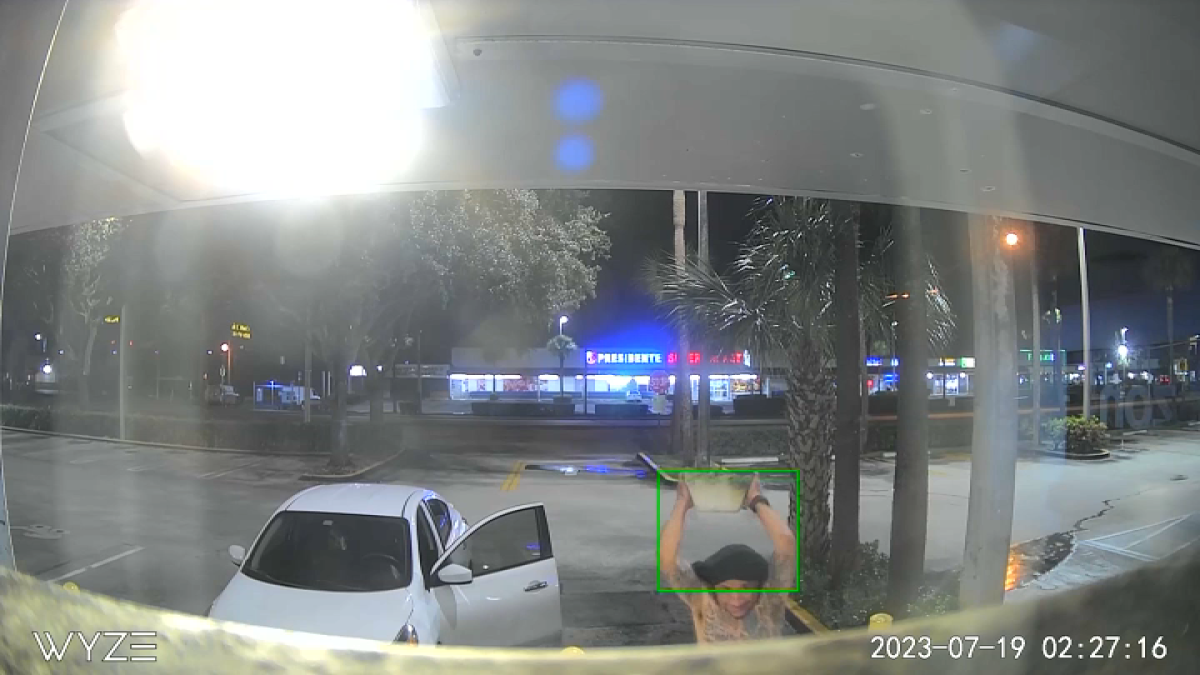Top 20 players available for Miami the second round
The Miami Dolphins, as things stand now, have one pick on Friday, and that’s their second-round selection, the No. 55 pick of the NFL draft, and the 23rd pick of the round.
Here are 20 players who might be available when the Dolphins make their selection, guys who either fit Miami’s needs or reasonably fit into the best player available category:
Ja’Tavion Sanders, TE, Texas
Sanders (6-4, 245) is thin, but he could be an immediate No. 3 receiver behind recceivers Tyreek Hill and Jaylen Waddle, and ahead of tight ends Durham Smythe and Jonnu Smith, and slot receiver Braxton Berrios. He’s athletic with good hands, and could be the missing link in the passing game.
Javon Bullard, S, Georgia
Bullard (5-11, 198) can play safety and slot/nickel, which offers the type of value the Dolphins need. He’s not ideal at either right now, but he’ll have time to grow as a rookie and he’d be an insurance policy in case safety Jevon Holland (final year of contract) or safety Jordan Poyer (one-year contract) doesn’t return.
Jackson-Powers Johnson, IOL, Oregon
Powers-Johnson (6-3, 328) is a talented center/guard who might be the best center in the draft. However, he’s considered good enough that the Dolphins could start him at either position as a rookie.
Michael Hall, DT, Ohio State
Hall (6-3, 290) needs to add weight, but he could fit with the Dolphins as a rotational player in his rookie season, learning from fellow defensive lineman Zach Sieler while adding bulk.
Patrick Paul, OT, Houston
Paul (6-7, 331) is long-armed, athletic, and smart. He could start at guard as a rookie and then kick outside to left tackle next season, assuming Pro Bowl left tackle Terron Armstead retires.
Braden Fiske, DT, Florida State
Fiske (6-4, 292) is a relative lightweight so he needs to add bulk, but he’s a high-motor guy with good feet and a relentless attitude. He’d be a good fit alongside Sieler because they’re both fairly athletic.
Ben Sinnott, TE, Kansas State
Sinnott (6-4, 250) could be slightly over-drafted as a second-rounder, but he had 49 receptions, 676 yards and six touchdowns, and was called upon to block regularly, so he could either play alongside Smythe or rotate with Smythe.
Zach Frazier, C, West Virginia
Frazier (6-3, 313) is barrel-chested, strong and agile. If the Dolphins go for an interior offensive lineman in the second round, and more specifically, a center, he’s a good choice.
Kris Jenkins, DT, Michigan
Jenkins (6-3, 299), whose father, Kris, was a Pro Bowl defensive tackle for Carolina and the New York Jets, is smallish, but he’s adept on taking on double teams. He’d fill the void left by ex-Dolphins defensive lineman Christian Wilkins.
Jer’Zhan Newton, DT, Illinois
Newton (6-2, 304) is athletic and smart, which is how he makes up for his lack of bulk. He shows knowledge of angles and combines that with good feet to stop the run and rush the passer. He’d likely start alongside Sieler.
Kingsley Suamataia, OT, BYU
Suamataia (6-5, 326) is a bit rough around the edges but he has the potential to develop quickly, which is generally what you want from a second-round pick. Suamataia can play left or right tackle but it’s not known if he can play guard. Still, he’d be a good fit as a backup tackle.
Ennis Rakestraw Jr., CB, Missouri
Rakestraw (5-11, 183) is here because, as the Dolphins have shown the past two seasons, you can never have too many cornerbacks. This pick, which seems unlikely but possible, would be more of a statement about the projected development of Cam Smith, last year’s second-round pick, than Rakestraw’s talent.
Jaden Hicks, S, Washington State
Hicks (6-2, 211) is big-bodied and physical. He can play in the box or play deep, which means he has versatility, and that’s a bonus as the Dolphins’ safeties unit, Holland and Jordan Poyer might not return intact after this season.
Christian Haynes, G, Connecticut
Haynes (6-3, 317) is regarded as a starting-caliber NFL right guard right now, and that could be intriguing and freeing for the Dolphins, who need interior offensive line help, especially at right guard, where Rob Hunt departed.
Blake Fisher, OT, Notre Dame
Fisher (6-6, 310) can play right or left tackle due to his athleticism and good feet but he’s regarded as a better RT prospect. It’s not known whether Fisher can play guard, which could be a requirement for him as a rookie.
Roger Rosengarten, OT, Washington
Rosengarten (6-5, 308) is a bit of a work in progress because he’s a bit slow but he’s smart and has a little bit of athleticism. He’d be viewed as a replacement for Armstead down the line.
Cooper DeJean, S, Iowa
DeJean (6-0, 203) is a bit of a ’tweener meaning he’s one of the best cornerbacks in the draft but some think he’s better suited for safety. Whatever the case, the Dolphins could use his athleticism.
Adonai Mitchell, WR, Texas
Mitchell (6-2, 205) has the size and speed the Dolphins could use among their receiver ranks. Yes, Miami already has two quality receivers, but as the Dolphins saw late last season there could be big problems if one is slowed.
Kool-Aid McKinstry, CB, Alabama
McKinstry (5-11, 199) could be another testament to what the Dolphins have learned the hard way, which is you can never have too many cornerbacks. Yes, Miami has lots of possibilities but there’s no guarantee players such as Smith and Nik Needham will be ready to contribute and play well.
Maason Smith, DT, LSU
Smith (6-5, 306) is a bit inexperienced but Miami has lots of defensive tackles so there might not be a pressure on Smith to play immediately. Then again, Miami probably needs someone to be a starter or top rotational player so Smith might be hard-pressed to fill the role the Dolphins need.



